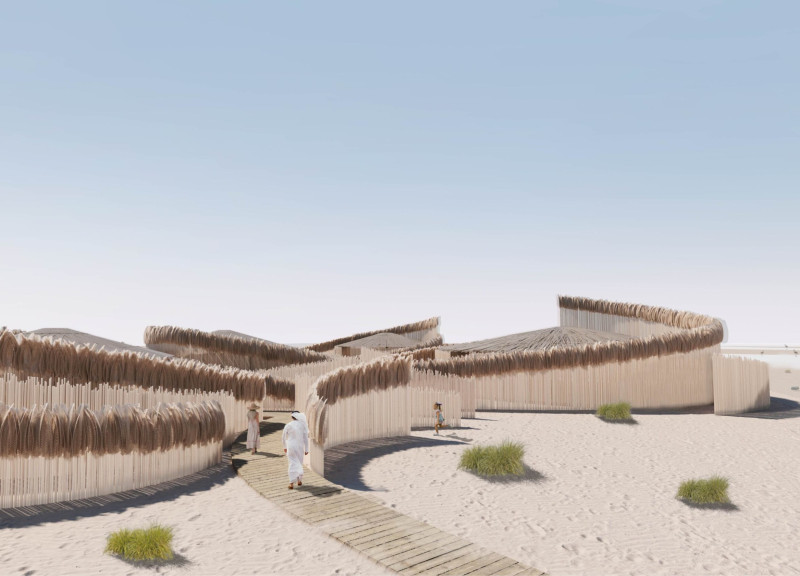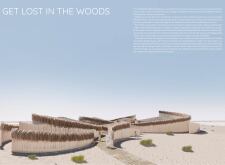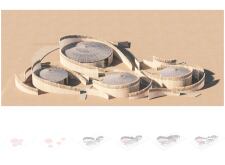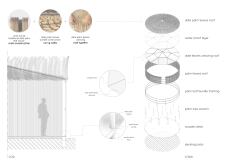5 key facts about this project
The architectural project titled "Get Lost in the Woods" is situated within the Al Wathba Wetland Reserve, a crucial habitat that supports various wildlife, including flamingos. Designed to facilitate engagement with the natural environment, the project emphasizes a thoughtful interaction between visitors and the delicate ecosystem. The architecture embodies a modern interpretation of traditional Emirati building practices, integrating local materials and forms into its overall design.
The primary function of this project is to create spaces for visitor engagement, including reception areas, shop facilities, and learning spaces. Each element of the design is carefully considered to enhance the visitor experience while ensuring minimal disruption to the surrounding wildlife. The project serves both educational and recreational purposes, helping to foster an appreciation for the unique wetland environment.
Sustainable Design and Material Use
A distinguishing feature of this project is its commitment to sustainability and the use of local materials. The primary construction materials include date palm leaves, wooden decking, and palm leaf bundles. These materials contribute to the building’s ecological objectives by minimizing energy consumption and reducing reliance on non-renewable resources. The design also incorporates innovative roofing techniques utilizing woven date palm leaves, which facilitate natural insulation while preserving the aesthetic integrity of the building.
The layout features interconnected, serpentine structures that promote a sense of exploration. Circular spaces dedicated to various functions ensure a fluid movement throughout the facility, allowing visitors to navigate seamlessly between the welcome area, shop, café, and training spaces. This configuration enhances visitor engagement with both the architecture and the surrounding wetlands.
Integration with the Landscape
The integration of architecture with the natural landscape is another critical aspect of the project. The design intentionally mimics organic forms found in nature, fostering a sense of continuity between built and natural environments. Pathways meander through the facility, encouraging visitors to immerse themselves in the wetland ecosystem, while strategically placed openings allow for natural light to penetrate interior spaces. This thoughtful approach promotes wildlife observation and enhances the overall visitor experience.
The project effectively balances architectural needs with the environmental context of the Al Wathba Wetland Reserve. The use of locally sourced materials, innovative design principles, and an emphasis on ecological sensitivity make it a relevant model for future projects in similar environments.
Readers interested in exploring the nuances of this architectural project are encouraged to review architectural plans, architectural sections, and architectural ideas for a deeper understanding of its design outcomes and structural components.























































